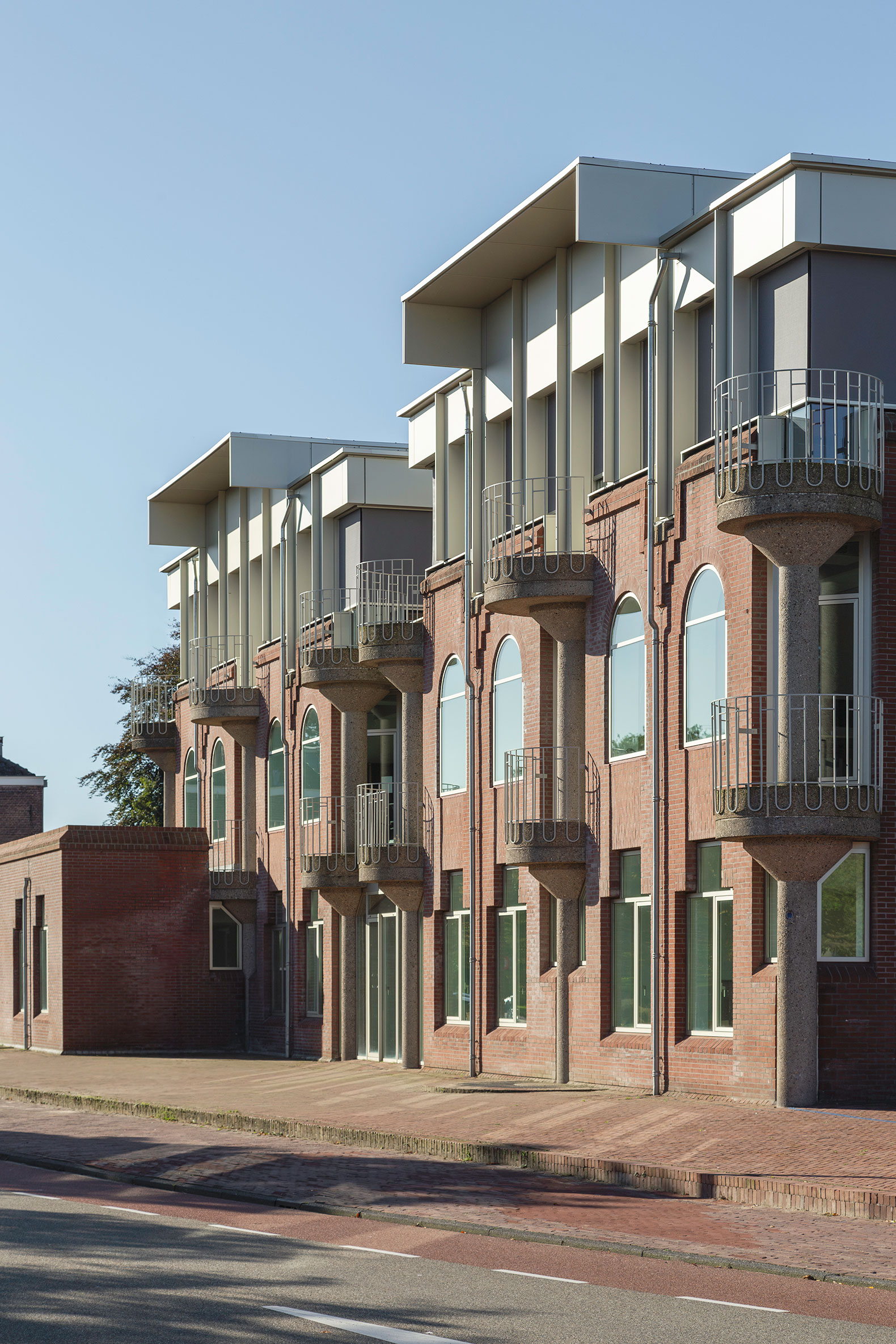
The project by the architecture studio De Zwarte Hond, which previously consisted of seven independent houses and whose difficult orientation gave rise to dark spaces inside and generated a closed atmosphere, is transformed in a sustainable way that prioritizes the reuse of different elements, where by demolishing a central element and replacing it with a new large core, the project is provided with a lot of natural light, facilitating the orientation of the visitor and providing cohesion to the whole.
The building is transformed according to sustainability requirements that it efficiently meets due to the new installation of the facilities and the adaptation and complementation of the existing structure from a completely new one. This new structure allows to combine and integrate in different layers the new and the previously existing, facilitating giving a second life to numerous materials and optimizing the use of the new ones.

Herta Mohr by De Zwarte Hond. Photograph by De Zwarte Hond.
Project description by De Zwarte Hond
Commissioned by Leiden University, De Zwarte Hond has completed the circular renovation and extension of the former Cluster Zuid building of the Faculty of Humanities. Architect Joop van Stigt designed Cluster Zuid for the Faculty of Humanities of Leiden University in the late 1970s. This impressive example of structuralist architecture was re-inaugurated on 8 October as Herta Mohr. It now offers 11,400 m² of space, plus car parking, with more than 700 teaching spaces and self-study places, two lecture theatres, work and meeting rooms, and common rooms. The building also houses the libraries of Leiden’s African Studies Centre and the Middle Eastern Studies program.
Better orientation and light boost unity
Cluster Zuid originally consisted of seven separate ‘houses’. Orientation in the building was difficult: the two courtyards were very similar and the narrow alleyways made the interior spaces dark. In addition, the dark ceilings and small windows, some with wired glass, created a closed and gloomy atmosphere.
To improve this, the central house was demolished and replaced by a new large central heart with lots of daylight. This makes it easier for visitors to better orient themselves from the central space, and the bright atrium creates a cohesive whole. New diagonal sightlines have been created from the existing houses to the heart.

The second floor was completely renovated and an eighth house with an anodised aluminium façade was added on the Maliebaan side. Van Stigt’s original design also included a house here, but it was never built.
Due to the protected cityscape, which means that Van Stigt’s original structure is a listed building, the changes to the façade have been kept to a minimum. Particularly striking are the prefabricated concrete columns with conical tops, some with round balconies, which are left fully visible in the renovated building.
The welcoming building opens up to the city: the entrance connects the square outside with the square inside, creating interaction with the environment. There is more space for people to meet, both inside at the coffee corner, and outside around the seating elements in the square. The building is part of the Humanity Campus, which will be improved in the coming years to better connect with the city and the green canal park. This building is the first step in this process.

A renovation that prioritizes reuse and sustainability
During the development of this building, 72% more sustainable measures were implemented than were required by the building regulations. By selecting high-quality materials with low emissions of unhealthy substances throughout the building, Herta Mohr now has a BREEAM Excellent certification. Insulation, solar panels, and a heat/cold storage system were also added.
In addition, new, efficient installations were installed to meet the high sustainability requirements. However, the existing structure could not support these changes, so the second floor was removed and a completely new structure was built on top of the building. This intervention has combined the separate ‘houses’ into one whole, with the technical installations fully integrated.
Reuse
The reuse of most of the original building and façade is a notable achievement. Concrete columns from the demolished central house were reused in the extension. Other materials were also given a new life. For example, the old Sequoia redwood ceiling panels were transformed into wall cladding in the atrium. These slats were carefully worked on, stripped of nails, and milled in collaboration with the social workshop BWRI. The specific pattern of the slats meant that everything could be prefabricated and installed, minimizing waste.

Respect for the existing
The renovation of the Cluster Zuid building complements and reinforces the existing design. The refurbished building reflects the spirit of Joop van Stigt as well as that of the present. By opting for renovation and sustainability, Herta Mohr has gained a new place in the collective memory of Leiden.
The project was carried out in collaboration with Combinatie Cluster Zuid, consisting of Constructif and Koninklijke Kuijpers. The project also included excellent cooperation from Aronsohn, Buro Bouwfysica, BWRI, KCAP, C2N, Fokkema & Partners Architecten, Harryvan, Nelissen Ingenieursbureau, New Horizon, and Pieters Bouwtechniek.














































